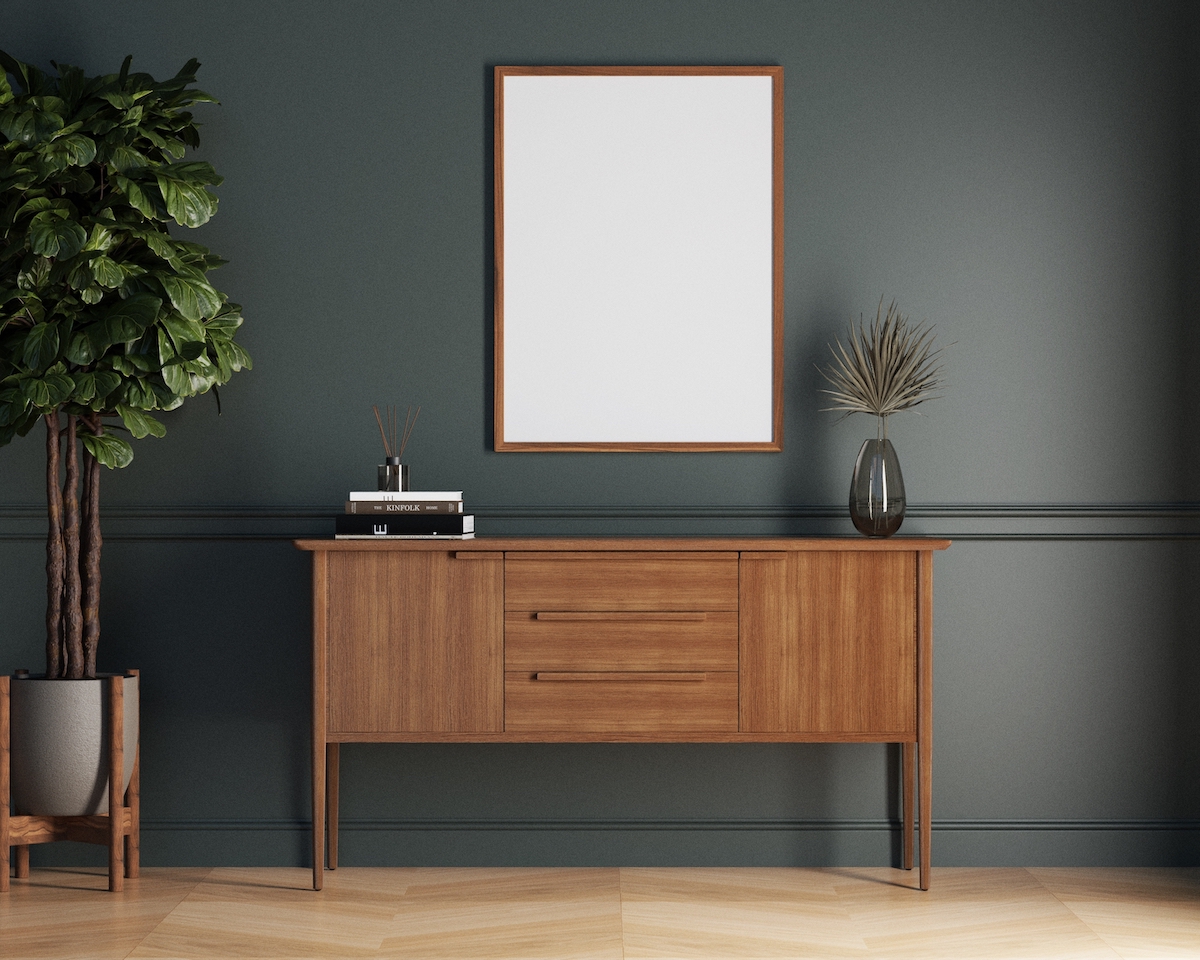Explore Popular Trim Styles & Materials for Your Home

Exploring Different Interior Trim Styles and Materials
An important, but often overlooked, part of designing or renovating your home is choosing interior trim styles. Even though trim only takes up a small amount of space on the edges of your walls, it has a big visual impact on the overall design of each room. It’s an important tool for covering transitions in the construction process between different materials like drywall and flooring.
There are a variety of materials and interior trim styles to choose from in order to suit your design style and the function of each room.
Popular Interior Trim Materials
To help you make the best decision for your space, we discuss different interior trim styles and materials below.
Wood
Wood is one of the most popular interior trim materials. Let’s look closer at the pros and cons of having it in your home.
Pros
Wood is one of the most popular choices for a reason. This classic option offers a beautiful and authentic woodgrain appearance, including a variety of stain options and grain patterns to match the design style of your space.
Within the category of wood interior trim, there are a variety of wood species to choose from, and each one offers its own benefits. For example, poplar is a widely-used interior trim material because it is dense (which makes it more durable), is great for staining, and is smooth enough to be painted beautifully.
Cons
While wood trim can handle short-term exposure to moisture, it will rot when exposed to moisture continually over a long period of time. Wood is also a more rigid material, and it is more prone to splitting when it’s nailed to the wall during installation. This can make for a more frustrating installation process.
MDF
MDF, which stands for medium-density fiberboard, is made from compressed wood fibers that are bound using resin. It’s the most common interior trim material on the market today. Let’s compare the pros and cons of this widely-used material.
Pros
Due to the way it’s constructed, MDF is an inexpensive interior trim material. MDF offers a smooth surface that is easily machinable into a variety of trim profiles. This makes it great for painting, and it also does not split when nailed to the wall like some types of solid wood can.
Cons
While there is a long list of benefits to using MDF as your interior trim material, it does have a few disadvantages. While new generations of MDF are less susceptible to moisture and less porous than past ones, there is still some risk of moisture damage, warping, and bubbling if not taken care of properly. While MDF is great for painting, it does not offer a stained or woodgrain look since it isn’t made from solid wood.
Finger-Joint Primed Pine
Finger-joint primed pine is less expensive than solid wood trim, with many of the same advantages — plus some additional ones. It’s another great choice for interior trim, and is even used for other home improvement projects like furniture and shelving. Below are more of the pros and cons of this beautiful and versatile material.
Pros
As mentioned above, finger-joint primed pine is less expensive than “real” wood. It’s also less prone to twisting and warping, ensuring a lifespan that lasts. Light in weight, it’s an easy material for even just one person to install and its visible grains ensure undoubtable beauty once the project is done!
Cons
While finger-joint primed pine is typically more affordable than solid wood trim, it can’t beat the low costs of MDF (of course, price will vary for all products depending on your supplier). Finger-joint primed pine is also fairly soft, so it can be susceptible to marks and dents if you’re not careful.
Popular Interior Trim Styles
Choosing your interior trim style is an important design decision because it will impact the overall look and feel of your home. For example, it can make it feel more modern or traditional depending on the type of style you choose for your interior trim.
If you’re looking for a relatively inexpensive and easy-to-install way to add personality to your home, interior trim is a great option. Here are a few popular interior trim styles to consider when trying to add interest to your spaces:
- Baseboards: This inexpensive option is usually standard in most homes because it’s an aesthetically-pleasing way to cover up the transition from drywall to flooring.
- Crown Molding: This popular option is a great way to add character, elegance, and a grand feeling to your spaces. It draws the eye up toward the ceiling.
- Chair Rail Trim: This interior trim style serves a double function: it provides a beautiful accent in dining and living rooms but also prevents the walls from being scuffed by furniture and repeated use.
- Quarter-Round Trim: Installed where the base of the wall meets the floors, this additional layer of trims adds an extra polished feeling to rooms.
- Wainscoting: This particular interior trim style adds an exciting focal point to any room with its framing appearance.
With so many to choose from, you’re sure to find the interior trim style that will elevate your home’s design!
Interior Trim Selections at Standard Supply & Lumber
Standard Supply & Lumber offers a wide selection of handcrafted moldings so you can have your desired interior trim style for your home. We offer MDF, pine, popular, maple, and oak, meaning you have a wide selection of style, maintenance, and cost options to choose from. You can’t go wrong with your choice, as every option will be a beautiful addition to your home’s design!
Contact our interior trim experts today to learn more.
